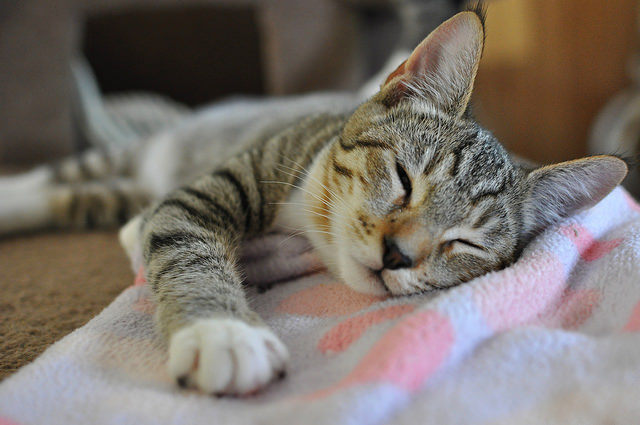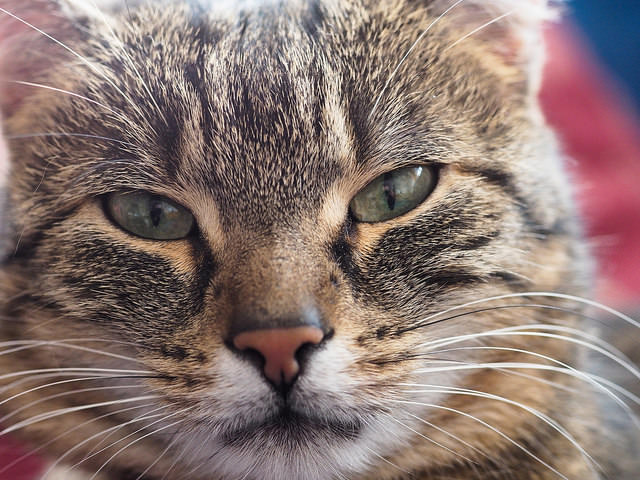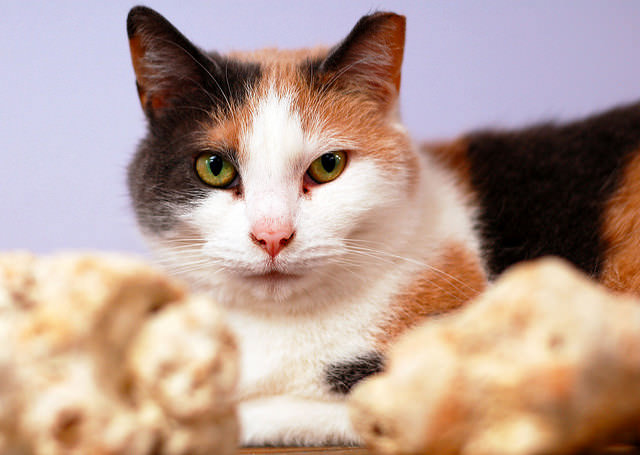Now that you’ve read Part 1 of this series and understand what feline diabetes is and what warning signs to look out for, you’ll be relieved to know that it is generally a treatable and manageable condition.

Image Source: this_binki via Flickr.com
Diagnosis
Since your cat’s organs depend on the correct balance of sugar and insulin in order to function properly, it’s critical that you make an appointment with your veterinarian as soon as your cat starts exhibiting the classic symptoms of diabetes.
There are three main tests that are generally performed to diagnose feline diabetes:
- A complete blood count will be done to analyze your cat’s red blood cells, white blood cells, and platelet count.
- A serum biochemistry profile will be done on a second blood sample. Once separated from the blood, the serum will give your veterinarian crucial information about glucose levels, electrolytes, and enzymes.
- A urinalysis will determine how much glucose is in your cat’s urine as well as evaluate ketones. It can also help diagnose a urinary tract infection, a common problem for diabetic cats.

Image Source: lovinkat via Flickr.com
Treatment
With some patience and dedication, feline diabetes is a manageable condition. With proper care and treatment, most diabetic cats can live long, happy lives.
Subcutaneous insulin injections are usually given twice per day at specific times (every 12 hours). Daily injections may sound intimidating, but subcutaneous injections are pretty simple and your cat will barely even notice since the needle will be so thin. Your veterinarian will teach you the proper way to inject and will let you practice before sending you home to do it yourself. Don’t hesitate to ask questions if you’re unsure about any part of the process!

Image Source: Wolfgang Lonien via Flickr.com
Your veterinarian will determine the specific dose based on the results of the blood tests and urinalysis. Since glucose levels often spike when cats are stressed out or anxious, the tests aren’t always 100% accurate– which means there may be an adjustment period as you work with your veterinarian to find the right dose. During this adjustment period, your veterinarian will routinely re-test your cat’s blood and urine, and you will note any changes to your cat’s eating habit, litter box habits, water consumption, and energy levels.
It’s very important that you never attempt to adjust insulin doses without your veterinarian’s instruction. The wrong dose can be dangerous (and even fatal) to your cat.
Depending on your cat’s specific condition and whether she is Type I (insulin-dependent) or Type II (non insulin-dependent), she may be able to eventually ween off of the insulin altogether. Cats with Type II diabetes can sometimes make a full recovery by losing weight and/or changing their diet to one that is low in carbohydrates. Discuss your cat’s situation with your veterinarian and never attempt to ween her from insulin without your veterinarian’s help.

Image Source: Angie Armstrong via Flickr.com
Prevention
Luckily, there are some things you can do to lessen your cat’s chances of developing diabetes.
- Help your cat maintain a healthy body weight by only feeding her the recommended serving of food and encouraging regular play sessions where she can run, jump, and hunt.
- Feed her a diet that is high in protein and low in carbohydrates. Consider a canned food diet, but avoid flavors made with gravy.
- Even if your cat seems healthy, scheduling consistent annual checkups can help detect health issues before symptoms are visible to you. Request blood and urine tests at her yearly exam.
